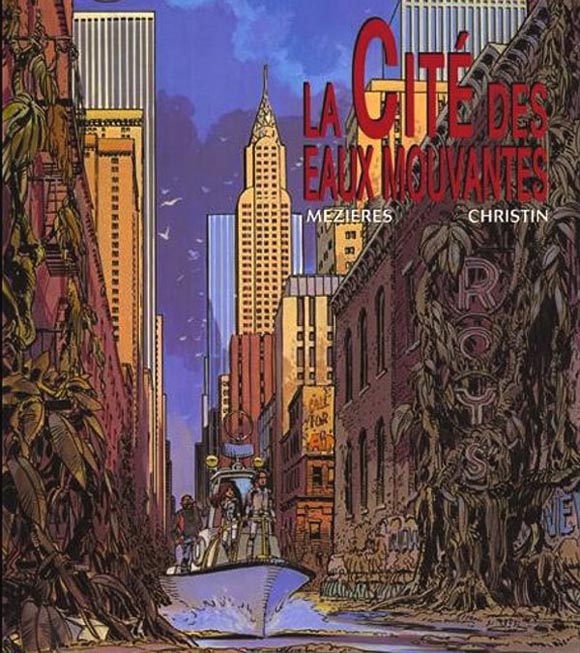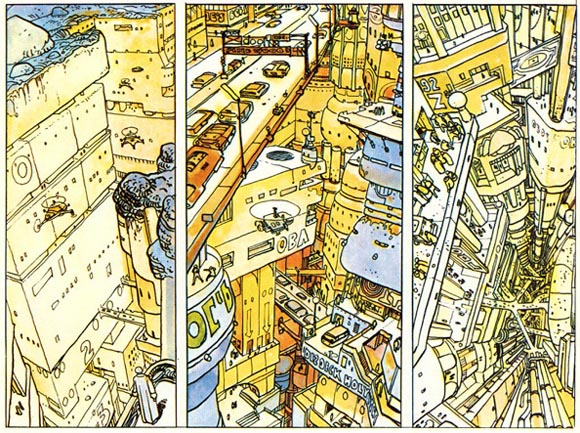Gravity Rush is a game to fall in love with. Wink! But no, seriously, I mean it. The title looked good in trailers. It demoed beautifully. And the final game rationalized the entire purchase price of the Vita to me. Did E3 make you lose your faith in the industry and the video game as a genre? Take a look at the original concept video.
Gravity Rush (or Gravity Daze in Japan) is an open-world 3D action adventure where you control a female superhero character that has power over gravity. By looking in any direction and pressing a button, the gravity affecting your character will switch in that direction. This basically means you can fall “into the screen”. There are some additional powers like being able to lift objects and slide along walls.
The final game doesn’t control as precisely as the concept video suggests. You don’t really fly through the world like a real superhero. More often, you fall awkwardly sideways through the streets, accidentally bumping into streets signs and pedestrians. But that experience taps perfectly into what the game is trying to achieve. You see, the point is that this is supposed to be a comic book superhero story, but not an American one.
I mentioned my love for Bande Dessinée numerous times. The french-beligan comics are the kind of comics I grew up with. I knew Thorgal and Valérian and Laureline way before I heard about Batman or Superman – at least in comic form. Of course, I eventually enjoyed the US comics as well. But they always appeared a little more crude to me. The BDs hat more elaborate illustrations, more complex and mature storylines and relied on their sense of style and wonder rather than on power fantasies and action. The characters in BDs were often clueless, they made mistakes. BDs were not about a character claiming power, there were about losing yourself in a place of intoxicating beauty. To be honest, I often didn’t understand the plot lines. Dare I say they seemed almost as an afterthought?

One of the true Bande Dessinée masterpieces of my childhood.
That’s what Gravity Daze is. The developers took their Japanese sensibility for Mangas and spliced it with the distinct look and feel of Bande Dessinée. The characters speak a fantasy gibberish mixture of Japanese and French. The world the game takes place in looks like somebody took pieces of Paris and suspended them in mid-air. The cut-scenes are comics. The trophy icons are tiny BD covers. The original title was even “Gravité” if the BD heritage wasn’t obvious enough for you. The final result is a mesmerizing mixture of exotic yet familiar ideas. So if you squint your eyes, there is even a bit of Sailor Moon in there somewhere – if the magical girl transformations aren’t a hint, the black cat sidekick certainly is.
And yes, it has a clichéd amnesia plot. And yes, the side characters and mission plots don’t really make much sense. And yes, the battle mechanics aren’t as tight as they probably should be. But all of this just drowns in the noise of me not giving a fuck as I spend hours catapulting myself from monorail girders onto oncoming steamer ship hovercrafts to the music of a jazzy violin solo.

Moebius. Nuff said.
Gravity Rush reminds me of an important lesson about games I have mentioned before. Game designers and gamers tend to focus on those qualities of games, that distinguish games from other media. They focus on interactivity and gameplay and mechanics. All this is good and well. However, the things that make games unique isn’t solely responsible for how they work.
Games are just as much an audio-visual medium as they are an interactive one.
Interactivity alone can carry you just so far. And sometimes, the visuals and music can pick up from there and take you to a magical place.
And if this was too cheesy for you, brace yourself. There is more Gravity Rush coming down the pipe. I still have more to say about Kat as a female protagonist. Do Jade, Chell and Faith have a new BFF? Find out in the next volume! Until then, if you own a Vita, you know what to do. If you don’t own a Vita, this could be a good reason to get one.






thanks for reminding us – its so easy to forget. (games, gameplay, mechanics, worlds)